Challengers are tasked with pushing the limits newly unleashed M0 Dual Core on the PSoC 62S4 with Infineon’s ModusToolbox
Platform.
Winners
After months of creating, coding and making, please help congratulate the Winners and Finishers of the At The Core Design Challenge
Challengers will be sent prizes to the addresses listed on their applications.
What was the Challenge
Get to the Core of the PSoC 6 microcontroller with multi-core project workflows found in ModusToolbox
3.0
Challengers were tasked with pushing the limits of the newly unleashed Arm® Cortex®-M0+ core on the PSoC 62 dual-core microcontroller with Infineon’s ModusToolbox
software development platform.
With the release of ModusToolbox 3.0, Infineon invites you to create projecuts that take advantage of the dual core architecture of the PSoC
62 microcontroller. Whether your application is looking to leverage dual core for low power modes, to securely partition the cores, or to drive multiple operating systems on a single microcontroller, the PSoC
62 with ModusToolbox
3.0 helps to ease your development efforts.
The sponsored challengers must use the ModusToolbox 3.0 development environment as well as demonstrate use of both the Cortex-M0+ and Cortex-M4 cores in their project.
The Kit
| The Sponsored Kit | The Specs |
|---|---|
 Buy Now |
PSoC
|
*Or local equivalent
**Grand Prize and Runner Up winners also earn the finisher prize.
| element14 Community Judges element14 Community Team |
 |
|
Infineon Technical Judges Clark and Lawrence |
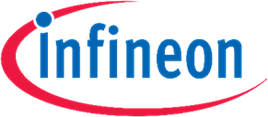 |
Grand Prize Winner
Digimorf – IT – ATCDC The project SEGA SG-1000 Emulator on PSoC62S4 Pioneer kit


Judges Notes:
This project managed to make use of all of the available compute power available in a microcontroller. Great work bringing this to completion and demonstrating the power of multi-cores. The use of DMA to generate VGA output is a great idea. Great use of the various configurators and tuners built into ModusToolbox.
This was absolutely and incredible project to watch develop. With pitfalls and challenges along the way, a real nail biter at the end. Great use of ModusToolbox, from using the Device Configurator to DMA and Linker File edits. DigiMorf really pushed the limits of the development kit and the onboard components.
Runner Up Winner
taifur – BG – Alphabet Learning Toy




Judges Notes:
This is a great project, both for your own learning of microcontroller programming, and for you daughter’s learning of the alphabet.
What a great reason to develop an embedded application. This project showed excellent use of the middleware available within ModusToolbox from emWin graphics to CAPSENSE.
Finisher navadeepganeshu – IN – Exploring IPC with PWN, ADC for Motor Control

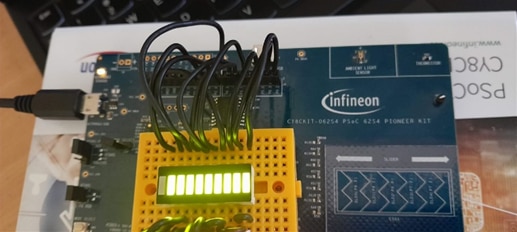
Judges Notes:
This blog series good example of interfacing multiple peripherals (light sensor, cap sense, PWM, LED bars, and motors) to a microcontroller, then dividing the work across the cores. Greak work.
The series of blog associated with this entry are very well done, and will serve as an excellent resource for many other community members.
Finisher - guillengap – MX – Infineon Beverage Dispenser


Judges Notes:
Great idea, I like that you started with a built-in project to get started with the capsense demo app, then incrementally adding adding a motor driver and controlling it with the pwm, then adding the OLED display and working around the memory usage constraints. Mechanical assembly of a full system makes the project more complete. Hope you will have a chance to complete the display, and have the proximity and liquid level sensors connected to the second core to automate the fill process.
This project was a very cool concept, and it was amazing to see both the embedded project and the physical dispenser materialize. Great use of the ModusToolbox Library Manager to leverage a code example created for one development kit on to another one.
Finisher fyaocn – CN – Tennis Ball Picker Machine


Judges Notes:
This project was a very ambitious task for a microcontroller. You made great progress and described your work to date very well. I hope you will complete the project and update the blogs.
This was a super ambition project and a great concept for the design challenge.
Finisher skruglewicz – USA – “Get to the Cores - Push the limits of ModusToolbox 3.0 multi-core Embedded Firmware Development”


Judges Notes:
This project is a great tutorial introduction to all of the components that will be merged together for the overall project. Excellent details on the steps and pitfalls when moving between versions of ModusToolbox and how to test all of the components used I the project. Overall a great learning experience.
This project really captures the quintessential dual-core use case. Great use of and RTOS and baremetal
Finisher aaryan2134 – IN – Uncover The Cores (Dual CoreTech Demo)


Judges Notes:
Thank you for detailing the steps of your learning and use of the PSoC Kit and the dual cores to independently process data from multiple sensors.
This project showed an excellent way to expand on the available semaphore code example with onboard sensors.
Finisher - sandeepdwivedi17 – IN – Adaptive Brightness Feature to Protect Your Eyes from Strain and Fatigue
/members/sandeepdwivedi17/blogs


Judges Notes:
This project made good use of an co-application running on a PC to process the sensor readings taken by the microcontroller and adjusting the screen brightness. Further work could be done to use the capsense buttons to manually adjust brightness.
Finisher rahulkhanna – India – Neonatal Monitor
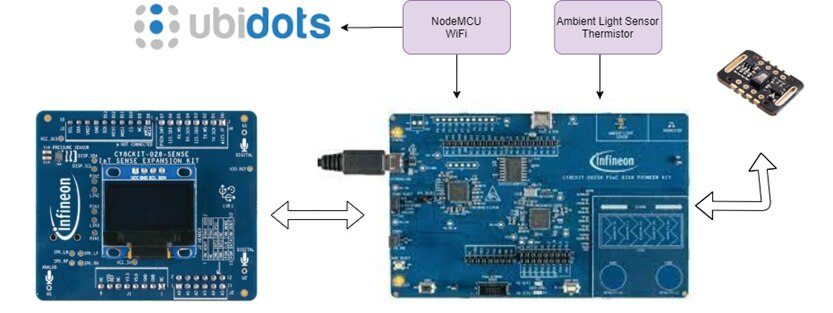
Judges Notes:
Great idea with lots of impact in the world. The Blynk dashboard is a good way to monitor the collected data.
Please congratulate our winners and check out their blogs!
I want to extend a Thank you to the wonderful team at Infineon and our amazing judges Clark and Lawrence.

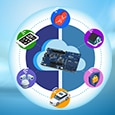
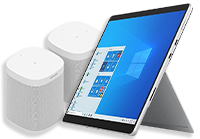


Top Comments